

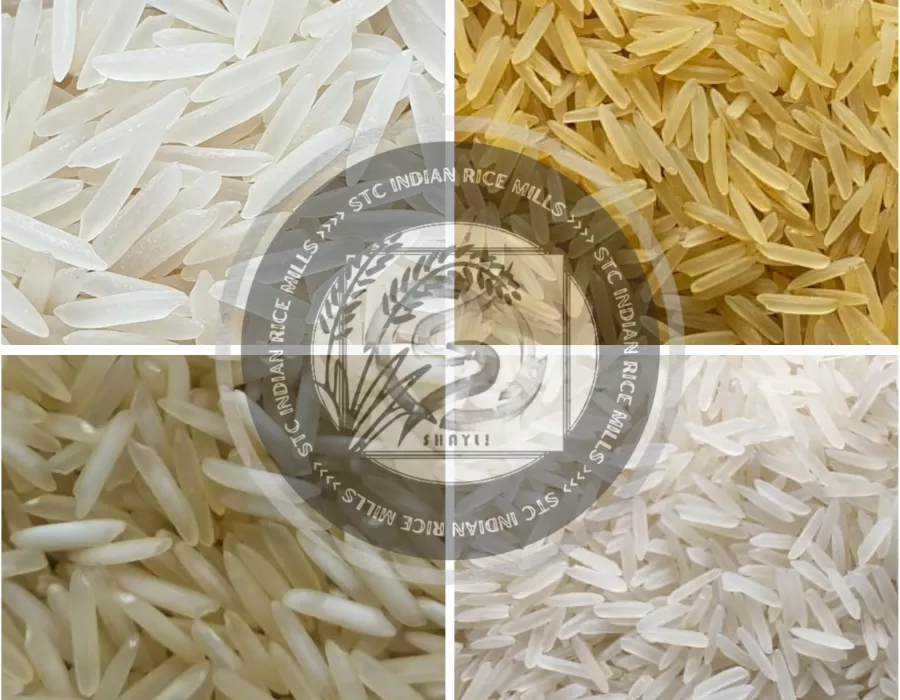
Indian Basmati Rice stands out as the preferred choice for those seeking the longest grains to elevate their meals, be it a luxurious biryani or an Italian dish. Here's why Basmati Rice from "STC Indian Rice Mills®" is a popular and distinctive option:
For those looking to enhance their meals with the finest Basmati Rice, "STC Indian Rice Mills®" invites you to place your order. Feel free to reach out to us, and let the exquisite taste of our Basmati Rice add a special touch to your culinary creations.
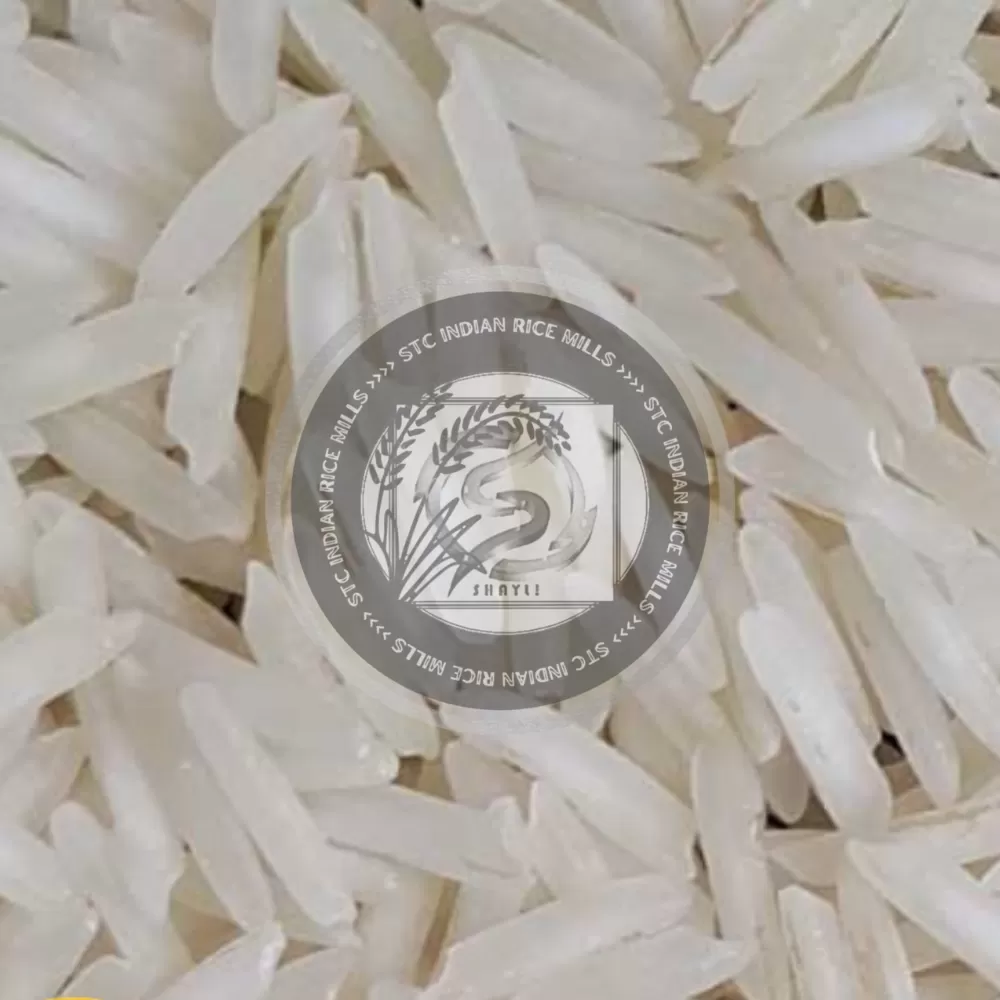
About Indian 1121 Basmati Rice :- The Indian 1121 Basmati Rice is renowned globally for its exceptional qualities that make it a preferred choice for culinary enthusiasts. Here are some key features and reasons why 1121 Basmati Rice stands out:-
Indian 1121 Raw/Normal Basmati Rice is renowned for its exceptional qualities, making it the preferred choice for those who appreciate the finest in rice. Here are some key features that set this variety apart:
For those seeking the finest in basmati rice, "STC Indian Rice Mills®" welcomes you to get in touch for the delivery of this delicious rice to your doorstep. Enjoy the exceptional taste and quality of Indian 1121 Basmati Rice in your culinary creations.
| Origin | India |
| Purity | 95.00% |
| Natural Admixture | 5.00% |
| Average Grain Length | 8.35MM |
| Moisture | 12.5% MAX. |
| Broken Grain | 1% MAX. |
| Damage/Discolour Grain | 1% MAX. |
| Immature Grain | 1% MAX. |
| Contrasting Varieties | 0.00% |
| Under-milled & Red-striped | 0.00% |
| Sortex Clean |
100% |
| Color |
White |
| Polishing Grade |
Double silky Polished |
| Milling Degree | Well Milled |
| Foreign Matter | Nil |
| Packaging Type | Jute, PP, WPP, BOPP, Jambo PP, LDPET, Non-woven Bags & Side Gussetz, 3D/2D Pouches or (1kg to 1000kgs Bags Packaging Available as per Buyer's choices). |
| Supply Ability | 2000 tons Per Week |
| Main Export Market(S) | Europe, USA, Australia, Saudi Arabia, Kuwait, Egypt, UAE, Jordan, Oman, Bahrain, Yemen, Syria, Iraq, Libya, Turkey |
| Delivery Time | 15 Days |
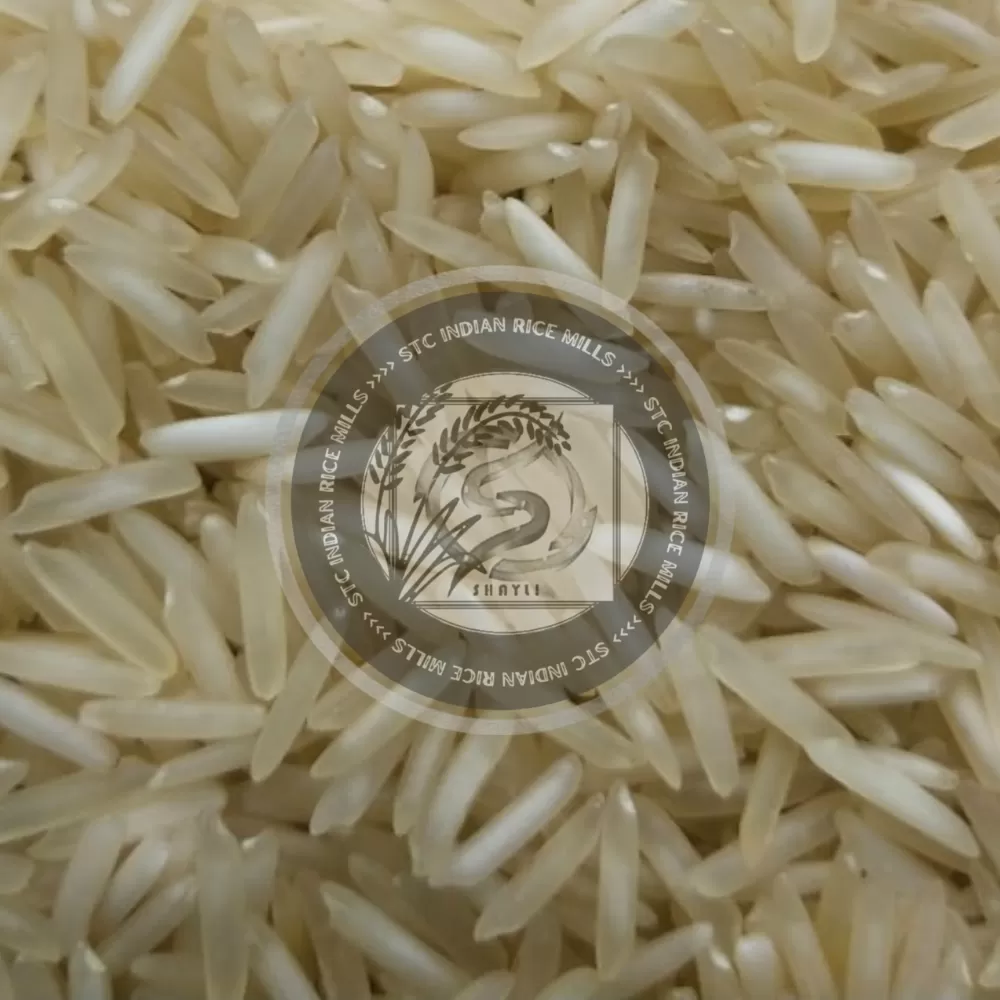
About Indian 1121 Basmati Rice :- The Indian 1121 Basmati Rice is renowned globally for its exceptional qualities that make it a preferred choice for culinary enthusiasts. Here are some key features and reasons why 1121 Basmati Rice stands out:-
Indian 1121 Steamed Basmati Rice stands out with its extraordinary characteristics, making it a top choice for those seeking the longest grains and an exceptional dining experience. Here are some key features that distinguish this variety:
The advantages of Indian 1121 Steamed Basmati Rice extend beyond the mentioned qualities. If you're eager to experience the deliciousness of this rice, don't hesitate to contact "STC Indian Rice Mills®" for a delivery to your doorstep. Enjoy the exceptional taste and quality in your culinary creations.
| Origin | India |
| Purity | 95.00% |
| Natural Admixture | 5.00% |
| Average Grain Length | 8.35MM |
| Moisture | 12.5% MAX. |
| Broken Grain | 1% MAX. |
| Damage/Discolour Grain | 1% MAX. |
| Immature Grain | 1% MAX. |
| Contrasting Varieties | 0.00% |
| Under-milled & Red-striped | 0.00% |
| Sortex Clean |
100% |
| Color |
Yellow white |
| Polishing Grade |
Double silky Polished |
| Milling Degree | Well Milled |
| Foreign Matter | Nil |
| Packaging Type | Jute, PP, WPP, BOPP, Jambo PP, LDPET, Non-woven Bags & Side Gussetz, 3D/2D Pouches or (1kg to 1000kgs Bags Packaging Available as per Buyer's choices). |
| Supply Ability | 2000 tons Per Week |
| Main Export Market(S) | Europe, USA, Australia, Saudi Arabia, Kuwait, Egypt, UAE, Jordan, Oman, Bahrain, Yemen, Syria, Iraq, Libya, Turkey |
| Delivery Time | 15 Days |
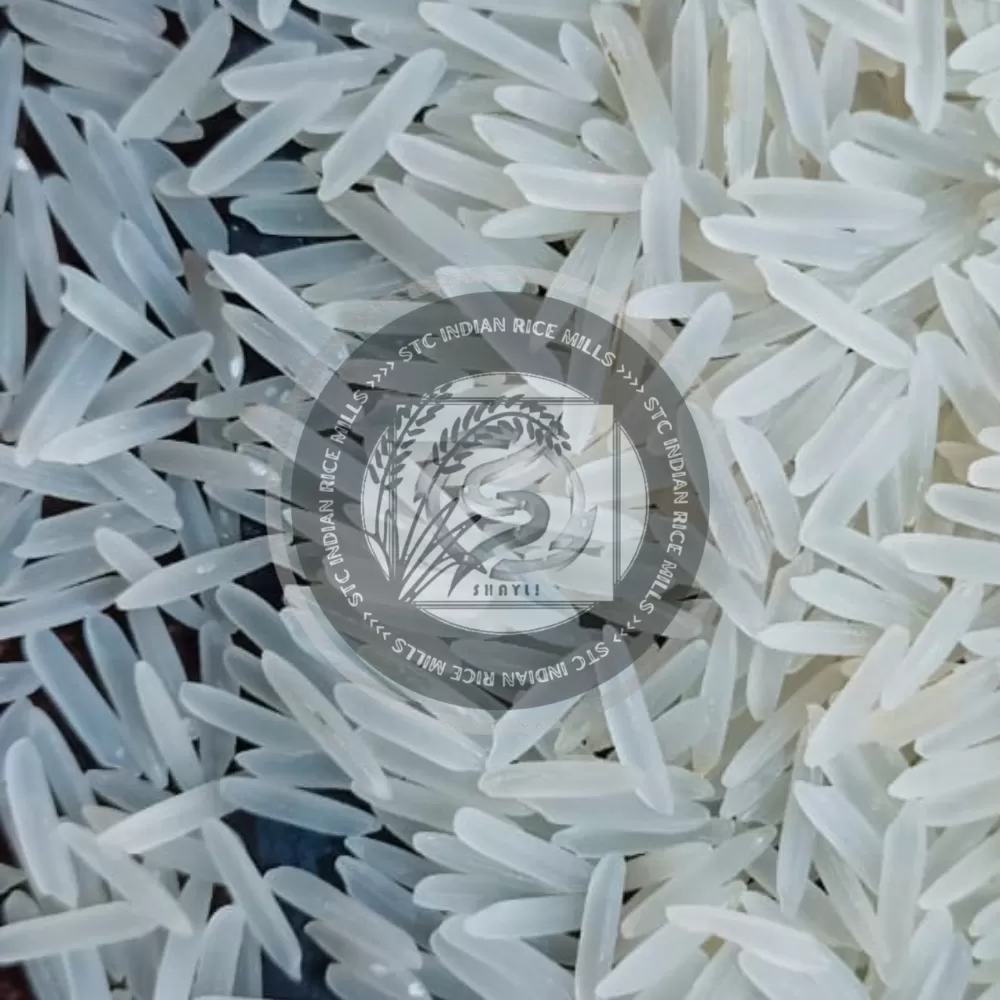
About Indian 1121 Basmati Rice :- The Indian 1121 Basmati Rice is renowned globally for its exceptional qualities that make it a preferred choice for culinary enthusiasts. Here are some key features and reasons why 1121 Basmati Rice stands out:-
Indian 1121 White/Creamy Sella Basmati Rice stands out for its exceptional characteristics, making it a preferred choice for those seeking the longest grains and a delightful culinary experience. Here are some key features that distinguish this variety:
For those eager to savor the wonderful taste of Indian 1121 White/Creamy Sella/Parboiled Basmati Rice, "STC Indian Rice Mills®" is ready to deliver this exceptional rice to your doorstep. Contact us to elevate your culinary experience with the finest basmati rice.
| Origin | India |
| Purity | 95.00% |
| Natural Admixture | 5.00% |
| Average Grain Length | 8.35MM |
| Moisture | 12.5% MAX. |
| Broken Grain | 1% MAX. |
| Damage/Discolour Grain | 1% MAX. |
| Immature Grain | 1% MAX. |
| Contrasting Varieties | 0.00% |
| Under-milled & Red-striped | 0.00% |
| Sortex Clean |
100% |
| Color |
White/Creamy |
| Polishing Grade |
Double silky Polished |
| Milling Degree | Well Milled |
| Foreign Matter | Nil |
| Packaging Type | Jute, PP, WPP, BOPP, Jambo PP, LDPET, Non-woven Bags & Side Gussetz, 3D/2D Pouches or (1kg to 1000kgs Bags Packaging Available as per Buyer's choices). |
| Supply Ability | 2000 tons Per Week |
| Main Export Market(S) | Europe, USA, Australia, Saudi Arabia, Kuwait, Egypt, UAE, Jordan, Oman, Bahrain, Yemen, Syria, Iraq, Libya, Turkey |
| Delivery Time | 15 Days |
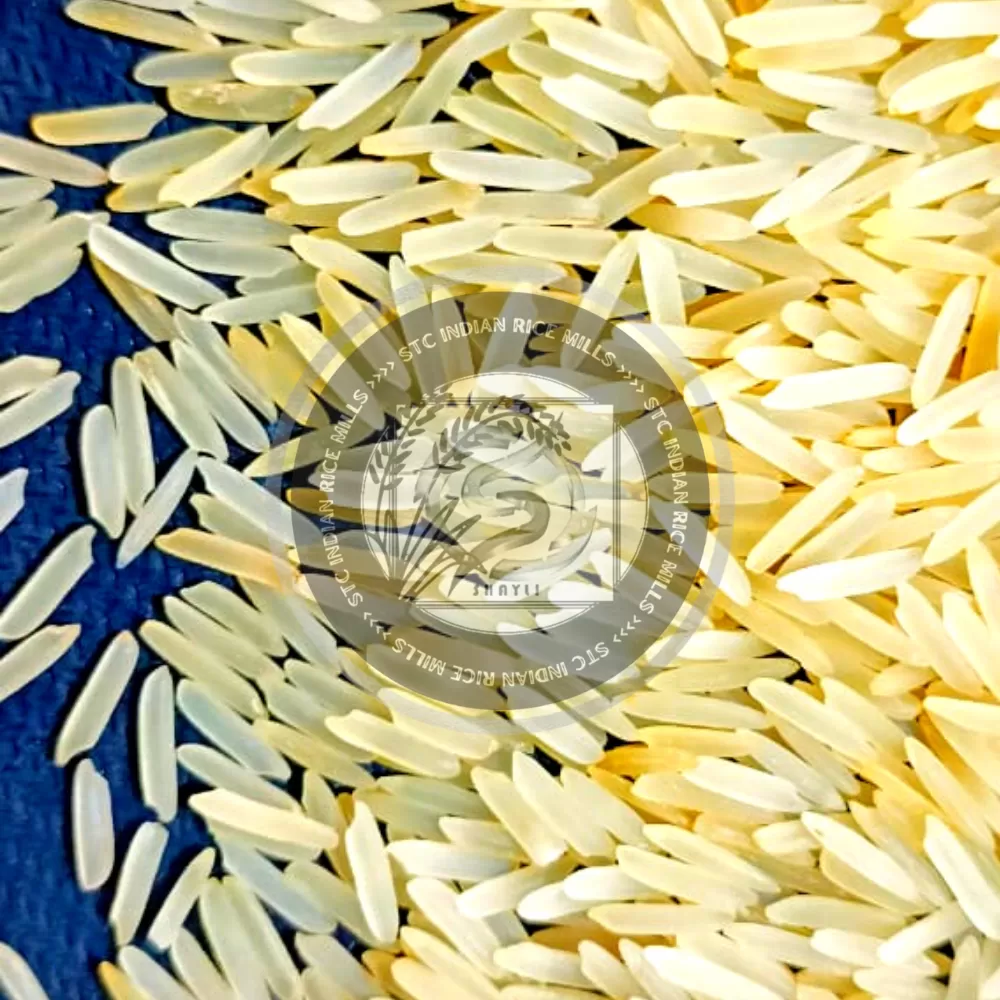
About Indian 1121 Basmati Rice :- The Indian 1121 Basmati Rice is renowned globally for its exceptional qualities that make it a preferred choice for culinary enthusiasts. Here are some key features and reasons why 1121 Basmati Rice stands out:-
Indian 1121 Golden Sella Basmati Rice is distinguished by its exceptional characteristics, making it a staple for those seeking the longest grains and a delightful culinary experience. Here are some key features that set this variety apart:
For those interested in stocking their pantry with this wonderful rice, "STC Indian Rice Mills®" invites you to get in touch. Elevate your culinary creations with the exceptional taste and quality of Indian 1121 Golden Sella Basmati Rice.
| Origin | India |
| Purity | 95.00% |
| Natural Admixture | 5.00% |
| Average Grain Length | 8.35MM |
| Moisture | 12.5% MAX. |
| Broken Grain | 1% MAX. |
| Damage/Discolour Grain | 1% MAX. |
| Immature Grain | 1% MAX. |
| Contrasting Varieties | 0.00% |
| Under-milled & Red-striped | 0.00% |
| Sortex Clean |
100% |
| Color |
Golden |
| Polishing Grade |
Double silky Polished |
| Milling Degree | Well Milled |
| Foreign Matter | Nil |
| Packaging Type | Jute, PP, WPP, BOPP, Jambo PP, LDPET, Non-woven Bags & Side Gussetz, 3D/2D Pouches or (1kg to 1000kgs Bags Packaging Available as per Buyer's choices). |
| Supply Ability | 2000 tons Per Week |
| Main Export Market(S) | Europe, USA, Australia, Saudi Arabia, Kuwait, Egypt, UAE, Jordan, Oman, Bahrain, Yemen, Syria, Iraq, Libya, Turkey |
| Delivery Time | 15 Days |
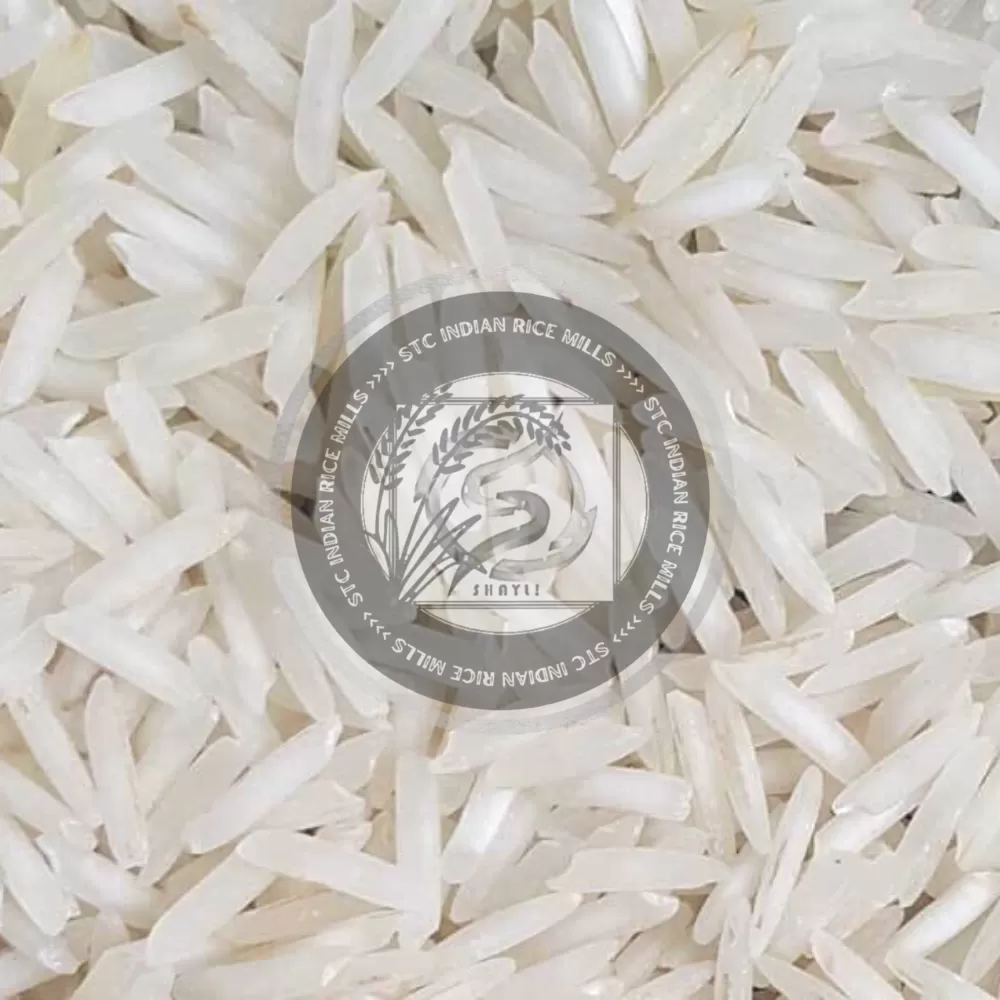
About Indian 1718 Basmati Rice :- Indian 1718 Basmati Rice is a newly developed variety, offering enhancements over the popular Indian 1121 Basmati Rice.
Raw Milling Process :-
| Origin | India |
| Purity | 95.00% |
| Natural Admixture | 5.00% |
| Average Grain Length | 8.35MM |
| Moisture | 12.5% MAX. |
| Broken Grain | 1% MAX. |
| Damage/Discolour Grain | 1% MAX. |
| Immature Grain | 1% MAX. |
| Contrasting Varieties | 0.00% |
| Under-milled & Red-striped | 0.00% |
| Sortex Clean |
100% |
| Color |
White |
| Polishing Grade |
Double silky Polished |
| Milling Degree | Well Milled |
| Foreign Matter | Nil |
| Packaging Type | Jute, PP, WPP, BOPP, Jambo PP, LDPET, Non-woven Bags & Side Gussetz, 3D/2D Pouches or (1kg to 1000kgs Bags Packaging Available as per Buyer's choices). |
| Supply Ability | 2000 tons Per Week |
| Main Export Market(S) | Europe, USA, Australia, Saudi Arabia, Kuwait, Egypt, UAE, Jordan, Oman, Bahrain, Yemen, Syria, Iraq, Libya, Turkey |
| Delivery Time | 15 Days |
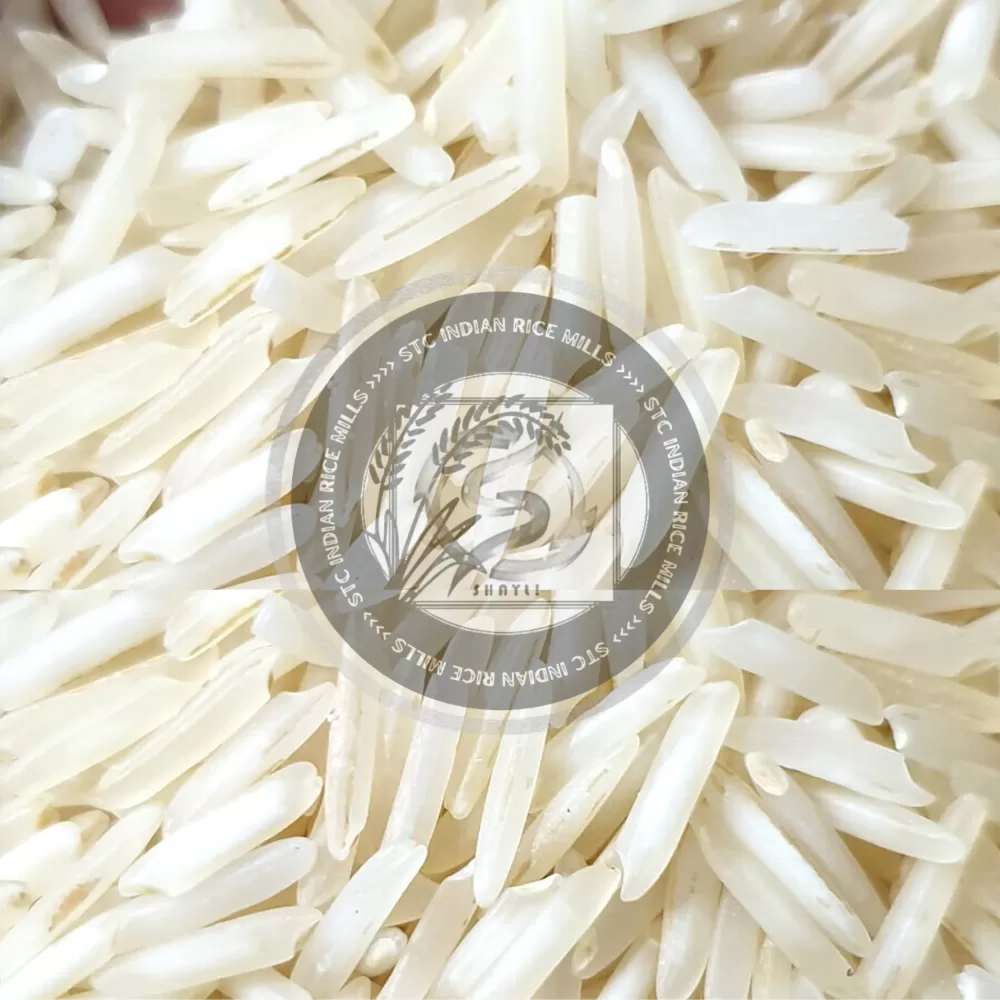
About Indian 1718 Basmati Rice :- Indian 1718 Basmati Rice is a newly developed variety, offering enhancements over the popular Indian 1121 Basmati Rice.
Milling & Steaming Process :-
| Origin | India |
| Purity | 95.00% |
| Natural Admixture | 5.00% |
| Average Grain Length | 8.35MM |
| Moisture | 12.5% MAX. |
| Broken Grain | 1% MAX. |
| Damage/Discolour Grain | 1% MAX. |
| Immature Grain | 1% MAX. |
| Contrasting Varieties | 0.00% |
| Under-milled & Red-striped | 0.00% |
| Sortex Clean |
100% |
| Color |
Yellow white |
| Polishing Grade |
Double silky Polished |
| Milling Degree | Well Milled |
| Foreign Matter | Nil |
| Packaging Type | Jute, PP, WPP, BOPP, Jambo PP, LDPET, Non-woven Bags & Side Gussetz, 3D/2D Pouches or (1kg to 1000kgs Bags Packaging Available as per Buyer's choices). |
| Supply Ability | 2000 tons Per Week |
| Main Export Market(S) | Europe, USA, Australia, Saudi Arabia, Kuwait, Egypt, UAE, Jordan, Oman, Bahrain, Yemen, Syria, Iraq, Libya, Turkey |
| Delivery Time | 15 Days |
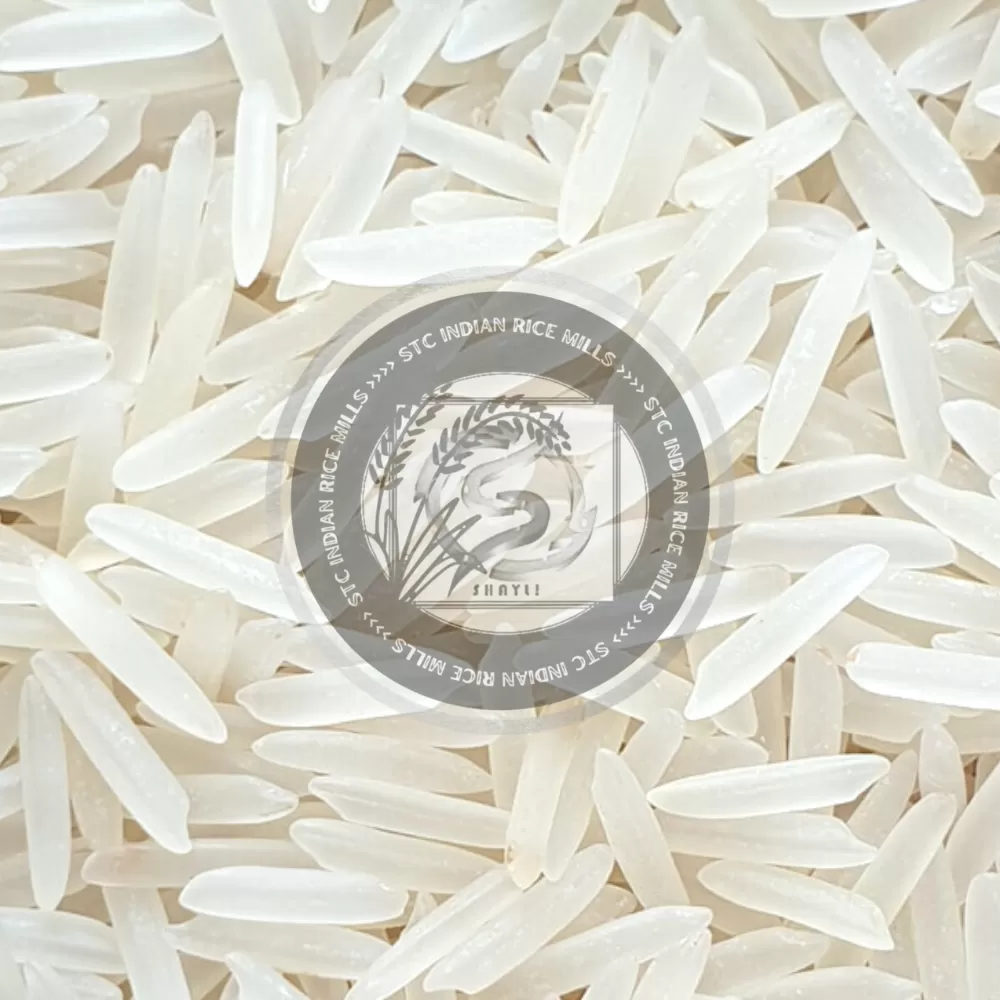
About Indian 1718 Basmati Rice :- Indian 1718 Basmati Rice is a newly developed variety, offering enhancements over the popular Indian 1121 Basmati Rice.
Milling & Parboiling Process :-
| Origin | -India |
| Purity | -95.00% |
| Natural Admixture | -5.00% |
| Average Grain Length | -8.35MM |
| Moisture | -12.5% MAX. |
| Broken Grain | -1% MAX. |
| Damage/Discolour Grain |
-1% MAX. |
| Immature Grain | -1% MAX. |
| Foreign Matter | -Nil |
| Packaging Type | -Jute bag, PP bag, Non-woven bag or as per buyer's choice. |
| Supply Ability | -2000 tons Per Week |
| Main Export Market(S) | -Europe, USA, Australia, Saudi Arabia, Kuwait, Egypt, UAE, Jordan, Oman, Bahrain, Yemen, Syria, Iraq, Libya, Turkey |
| Delivery Time | -15 Days |
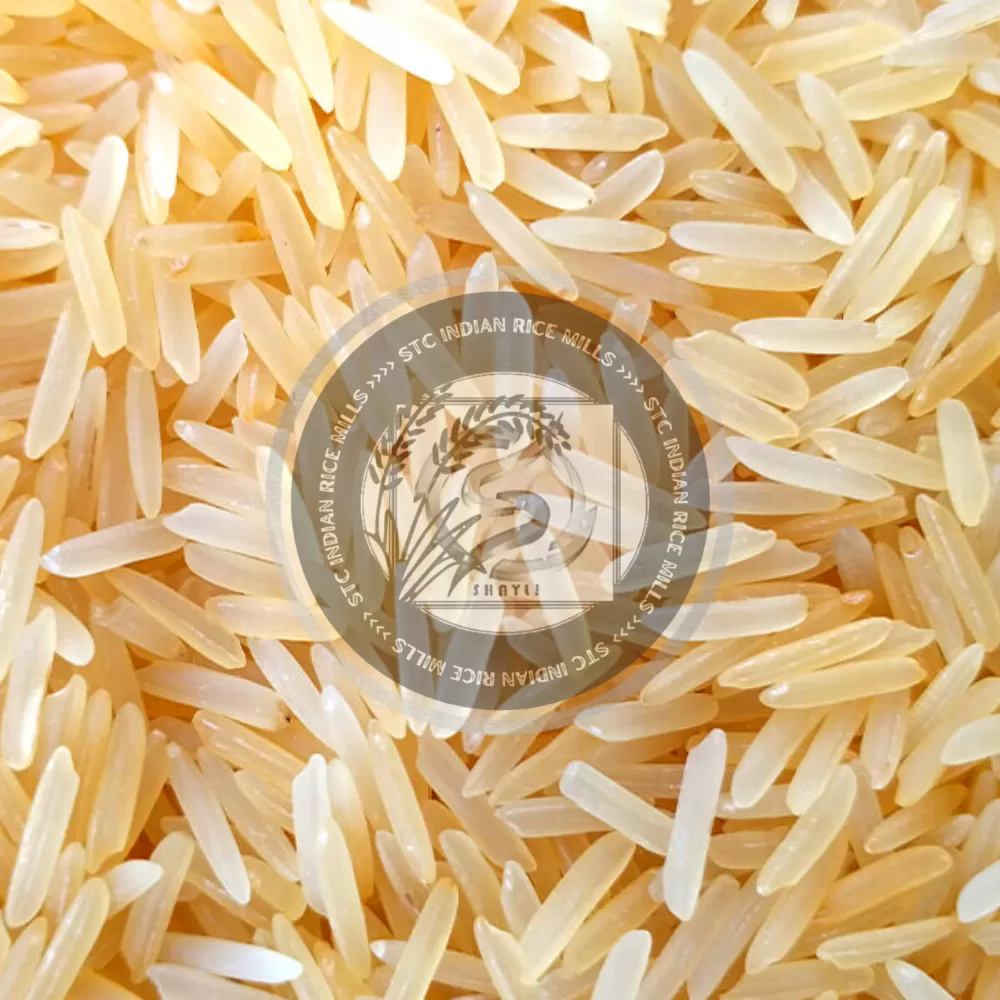
About Indian 1718 Basmati Rice :- Indian 1718 Basmati Rice is a newly developed variety, offering enhancements over the popular Indian 1121 Basmati Rice.
Milling & Golden Parboiling Process :-
| Origin | India |
| Purity | 95.00% |
| Natural Admixture | 5.00% |
| Average Grain Length | 8.35MM |
| Moisture | 12.5% MAX. |
| Broken Grain | 1% MAX. |
| Damage/Discolour Grain | 1% MAX. |
| Immature Grain | 1% MAX. |
| Contrasting Varieties | 0.00% |
| Under-milled & Red-striped | 0.00% |
| Sortex Clean |
100% |
| Color |
Golden |
| Polishing Grade |
Double silky Polished |
| Milling Degree | Well Milled |
| Foreign Matter | Nil |
| Packaging Type | Jute, PP, WPP, BOPP, Jambo PP, LDPET, Non-woven Bags & Side Gussetz, 3D/2D Pouches or (1kg to 1000kgs Bags Packaging Available as per Buyer's choices). |
| Supply Ability | 2000 tons Per Week |
| Main Export Market(S) | Europe, USA, Australia, Saudi Arabia, Kuwait, Egypt, UAE, Jordan, Oman, Bahrain, Yemen, Syria, Iraq, Libya, Turkey |
| Delivery Time | 15 Days |
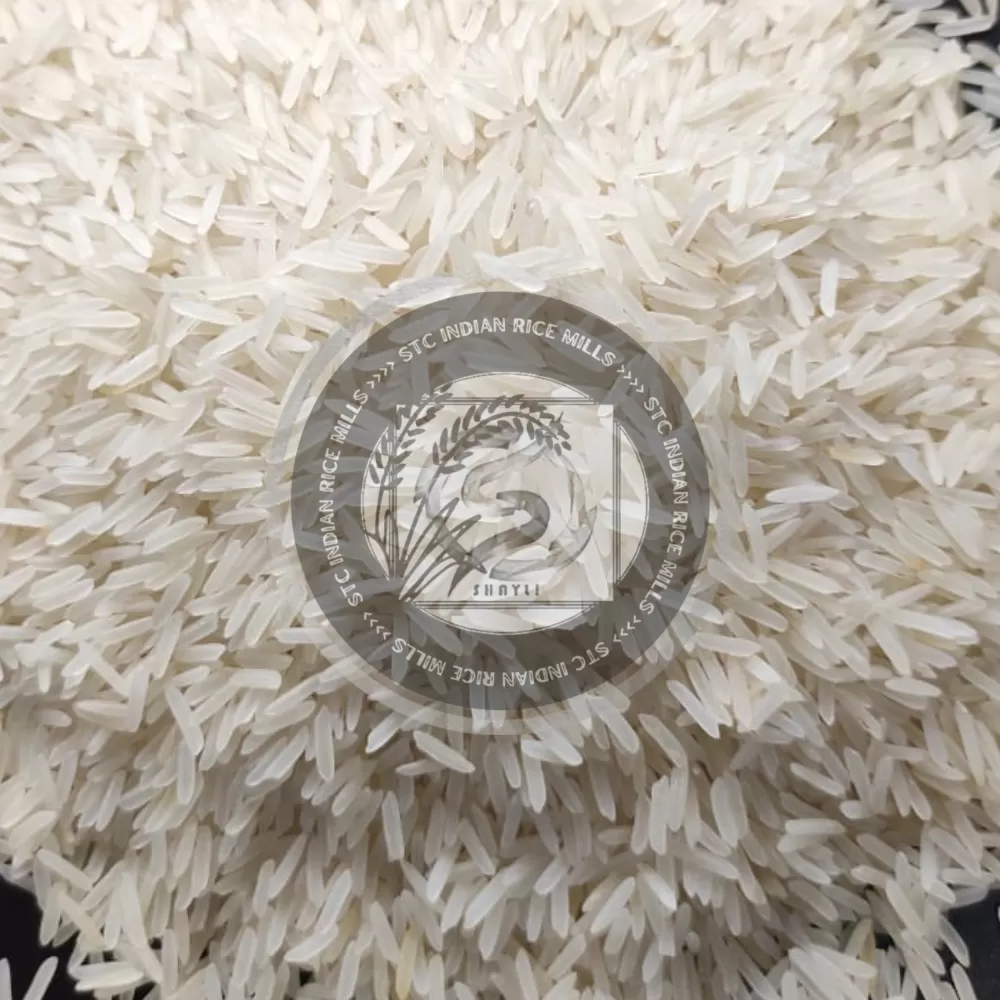
About Indian 1509 Basmati Rice :-
Milling & Parboiling Process :-
| Origin | India |
| Purity | 95.00% |
| Natural Admixture | 5.00% |
| Average Grain Length | 8.40MM |
| Moisture | 12.5% MAX. |
| Broken Grain | 1% MAX. |
| Damage/Discolour Grain | 1% MAX. |
| Immature Grain | 1% MAX. |
| Contrasting Varieties | 0.00% |
| Under-milled & Red-striped | 0.00% |
| Sortex Clean |
100% |
| Color |
White/Creamy |
| Polishing Grade |
Double silky Polished |
| Milling Degree | Well Milled |
| Foreign Matter | Nil |
| Packaging Type | Jute, PP, WPP, BOPP, Jambo PP, LDPET, Non-woven Bags & Side Gussetz, 3D/2D Pouches or (1kg to 1000kgs Bags Packaging Available as per Buyer's choices). |
| Supply Ability | 2000 tons Per Week |
| Main Export Market(S) | Europe, USA, Australia, Saudi Arabia, Kuwait, Egypt, UAE, Jordan, Oman, Bahrain, Yemen, Syria, Iraq, Libya, Turkey |
| Delivery Time | 15 Days |
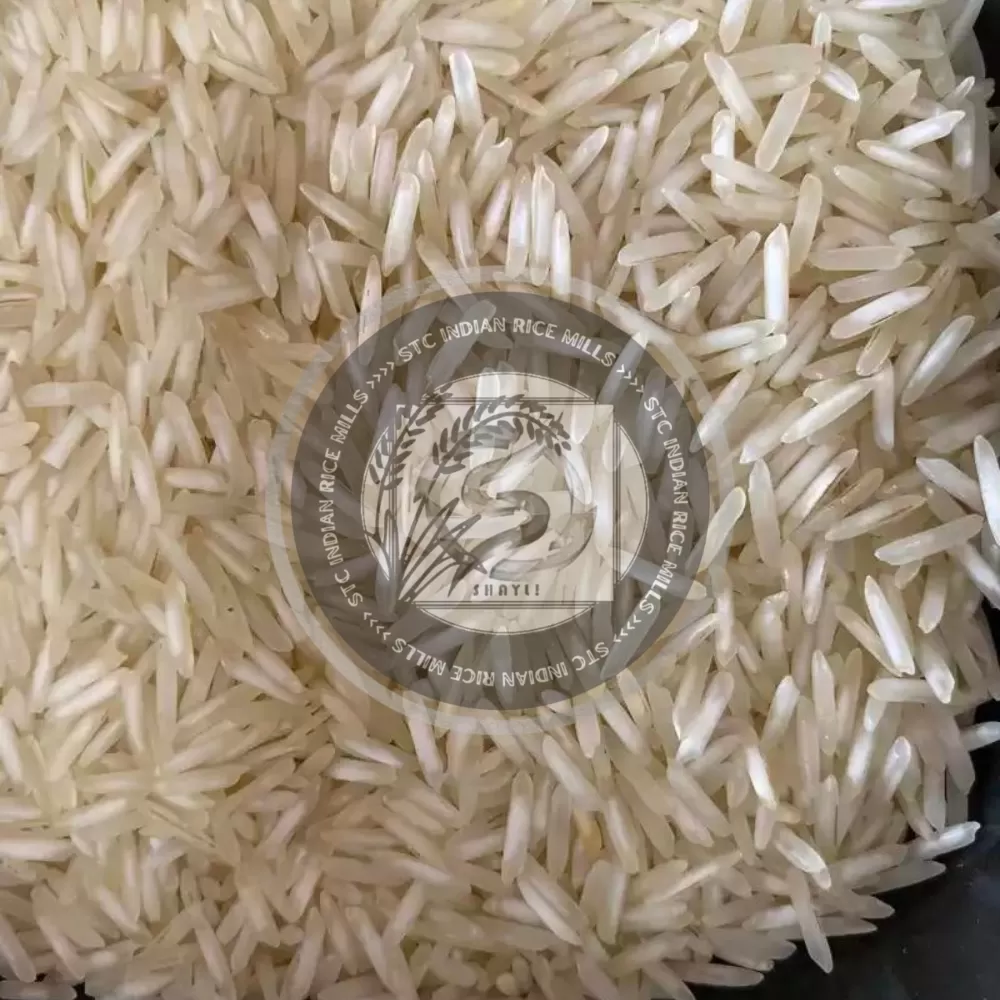
About Indian 1509 Basmati Rice :-
Milling & Steaming Process :-
| Origin | India |
| Purity | 95.00% |
| Natural Admixture | 5.00% |
| Average Grain Length | 8.40MM |
| Moisture | 12.5% MAX. |
| Broken Grain | 1% MAX. |
| Damage/Discolour Grain | 1% MAX. |
| Immature Grain | 1% MAX. |
| Contrasting Varieties | 0.00% |
| Under-milled & Red-striped | 0.00% |
| Sortex Clean |
100% |
| Color |
Yellow white |
| Polishing Grade |
Double silky Polished |
| Milling Degree | Well Milled |
| Foreign Matter | Nil |
| Packaging Type | Jute, PP, WPP, BOPP, Jambo PP, LDPET, Non-woven Bags & Side Gussetz, 3D/2D Pouches or (1kg to 1000kgs Bags Packaging Available as per Buyer's choices). |
| Supply Ability | 2000 tons Per Week |
| Main Export Market(S) | Europe, USA, Australia, Saudi Arabia, Kuwait, Egypt, UAE, Jordan, Oman, Bahrain, Yemen, Syria, Iraq, Libya, Turkey |
| Delivery Time | 15 Days |
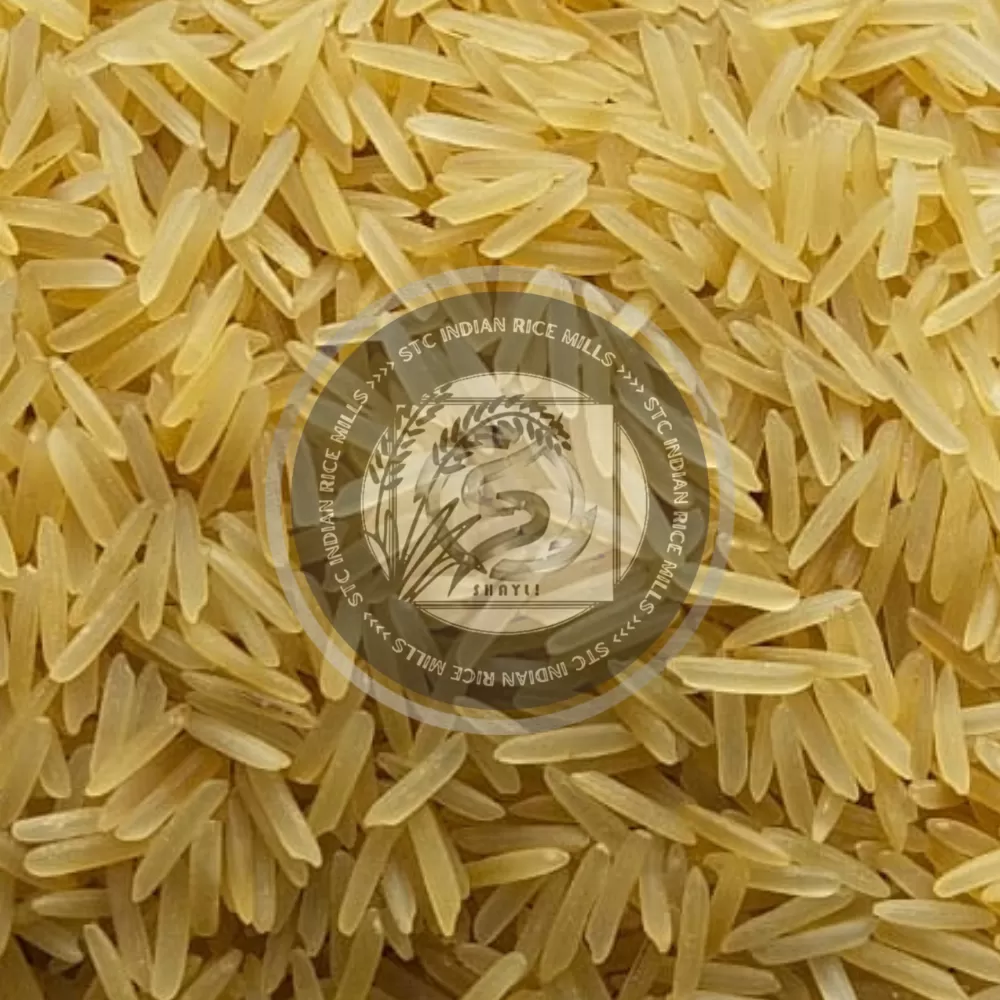
About Indian 1509 Basmati Rice :-
Milling & Golden Parboiling Process :-
| Origin | India |
| Purity | 95.00% |
| Natural Admixture | 5.00% |
| Average Grain Length | 8.40MM |
| Moisture | 12.5% MAX. |
| Broken Grain | 1% MAX. |
| Damage/Discolour Grain | 1% MAX. |
| Immature Grain | 1% MAX. |
| Contrasting Varieties | 0.00% |
| Under-milled & Red-striped | 0.00% |
| Sortex Clean |
100% |
| Color |
Golden |
| Polishing Grade |
Double silky Polished |
| Milling Degree | Well Milled |
| Foreign Matter | Nil |
| Packaging Type | Jute, PP, WPP, BOPP, Jambo PP, LDPET, Non-woven Bags & Side Gussetz, 3D/2D Pouches or (1kg to 1000kgs Bags Packaging Available as per Buyer's choices). |
| Supply Ability | 2000 tons Per Week |
| Main Export Market(S) | Europe, USA, Australia, Saudi Arabia, Kuwait, Egypt, UAE, Jordan, Oman, Bahrain, Yemen, Syria, Iraq, Libya, Turkey |
| Delivery Time | 15 Days |
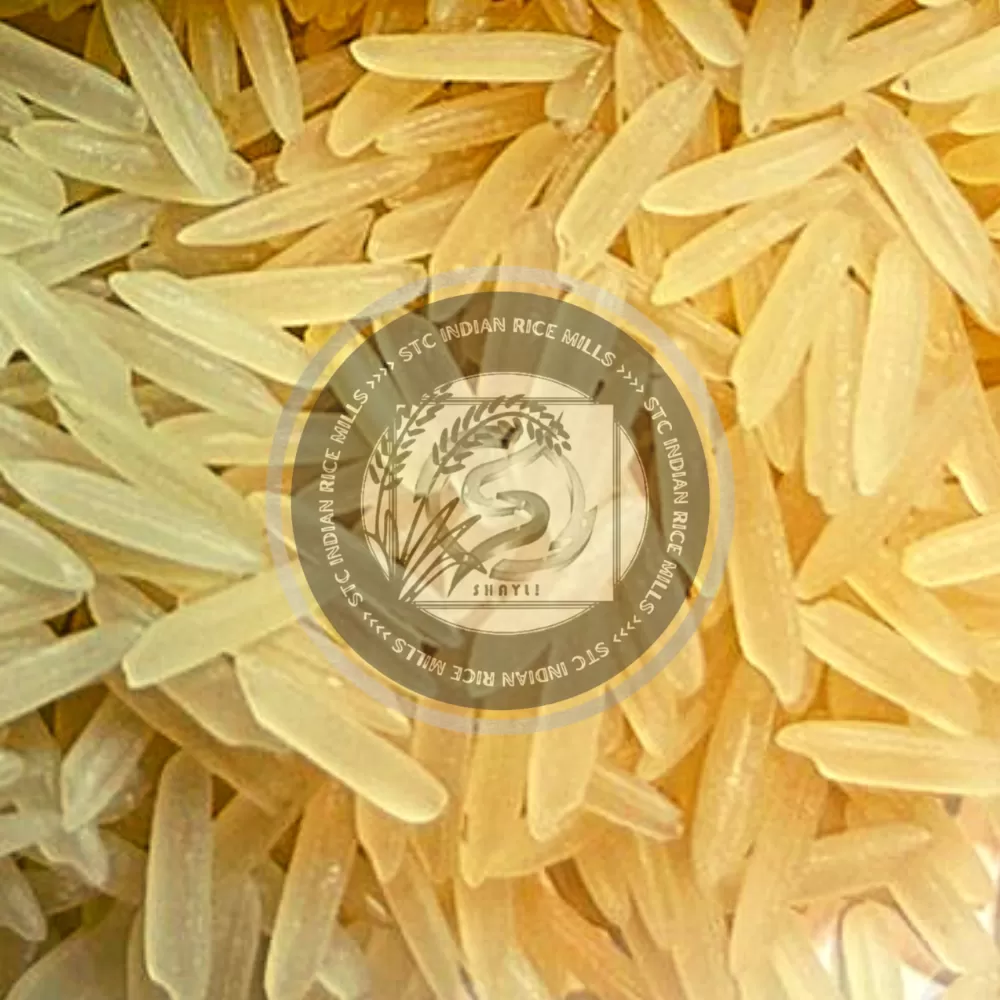
About Indian 1401 Basmati Rice :-
Milling & Golden Parboiling Process :-
| Origin | India |
| Purity | 95.00% |
| Natural Admixture | 5.00% |
| Average Grain Length | 7.70MM |
| Moisture | 12.5% MAX. |
| Broken Grain | 1% MAX. |
| Damage/Discolour Grain | 1% MAX. |
| Immature Grain | 1% MAX. |
| Contrasting Varieties | 0.00% |
| Under-milled & Red-striped | 0.00% |
| Sortex Clean |
100% |
| Color |
Golden |
| Polishing Grade |
Double silky Polished |
| Milling Degree | Well Milled |
| Foreign Matter | Nil |
| Packaging Type | Jute, PP, WPP, BOPP, Jambo PP, LDPET, Non-woven Bags & Side Gussetz, 3D/2D Pouches or (1kg to 1000kgs Bags Packaging Available as per Buyer's choices). |
| Supply Ability | 2000 tons Per Week |
| Main Export Market(S) | Europe, USA, Australia, Saudi Arabia, Kuwait, Egypt, UAE, Jordan, Oman, Bahrain, Yemen, Syria, Iraq, Libya, Turkey |
| Delivery Time | 15 Days |
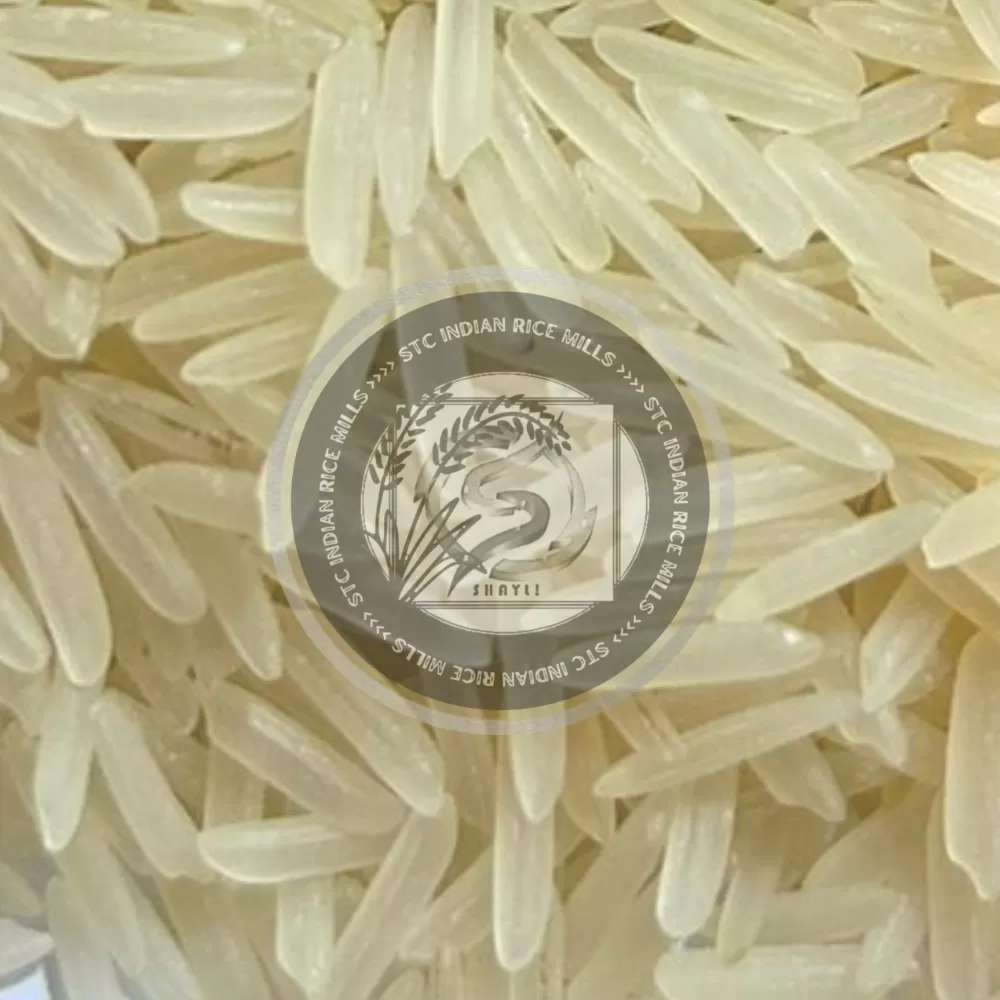
About Indian 1401 Basmati Rice :-
Milling & Parboiling Process :-
| Origin | India |
| Purity | 95.00% |
| Natural Admixture | 5.00% |
| Average Grain Length | 7.70MM |
| Moisture | 12.5% MAX. |
| Broken Grain | 1% MAX. |
| Damage/Discolour Grain | 1% MAX. |
| Immature Grain | 1% MAX. |
| Contrasting Varieties | 0.00% |
| Under-milled & Red-striped | 0.00% |
| Sortex Clean |
100% |
| Color |
White/Creamy |
| Polishing Grade |
Double silky Polished |
| Milling Degree | Well Milled |
| Foreign Matter | Nil |
| Packaging Type | Jute, PP, WPP, BOPP, Jambo PP, LDPET, Non-woven Bags & Side Gussetz, 3D/2D Pouches or (1kg to 1000kgs Bags Packaging Available as per Buyer's choices). |
| Supply Ability | 2000 tons Per Week |
| Main Export Market(S) | Europe, USA, Australia, Saudi Arabia, Kuwait, Egypt, UAE, Jordan, Oman, Bahrain, Yemen, Syria, Iraq, Libya, Turkey |
| Delivery Time | 15 Days |
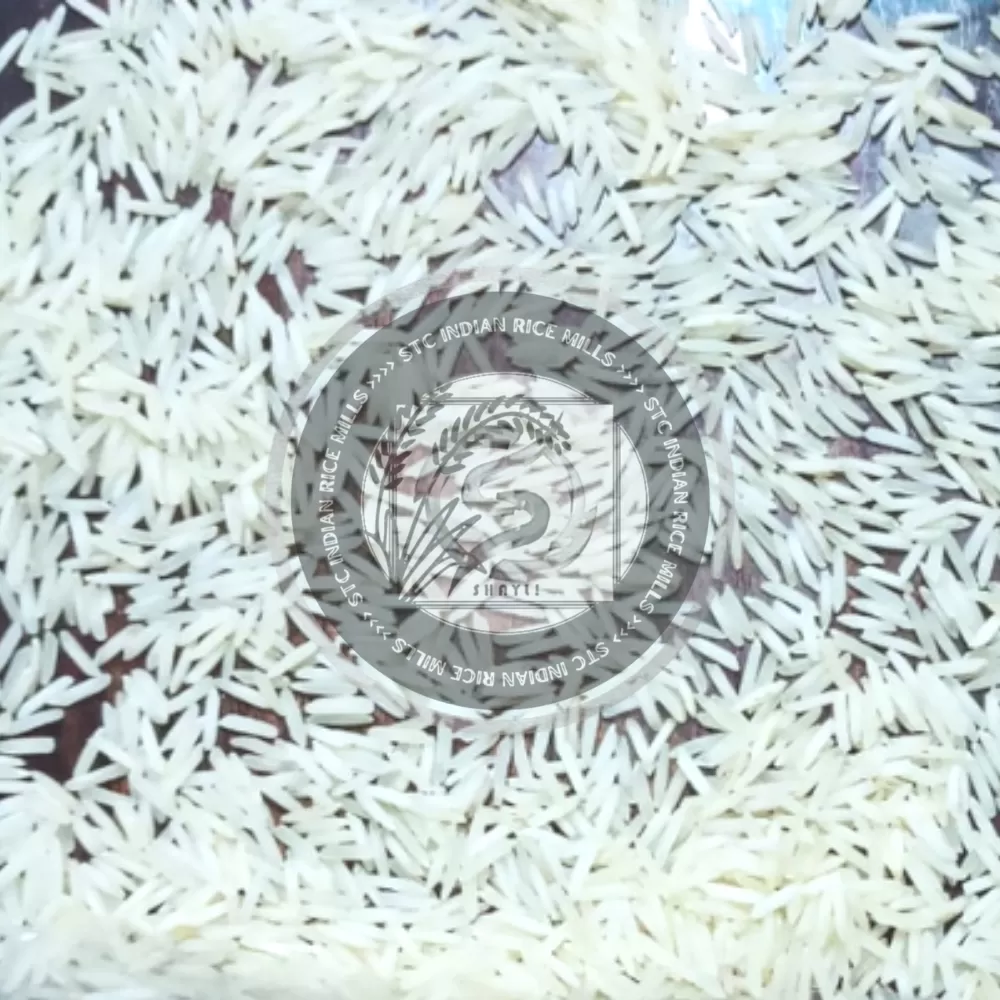
About Indian 1401 Basmati Rice :-
Milling & Steaming Process :-
| Origin | India |
| Purity | 95.00% |
| Natural Admixture | 5.00% |
| Average Grain Length | 7.70MM |
| Moisture | 12.5% MAX. |
| Broken Grain | 1% MAX. |
| Damage/Discolour Grain | 1% MAX. |
| Immature Grain | 1% MAX. |
| Contrasting Varieties | 0.00% |
| Under-milled & Red-striped | 0.00% |
| Sortex Clean |
100% |
| Color |
Yellow white |
| Polishing Grade |
Double silky Polished |
| Milling Degree | Well Milled |
| Foreign Matter | Nil |
| Packaging Type | Jute, PP, WPP, BOPP, Jambo PP, LDPET, Non-woven Bags & Side Gussetz, 3D/2D Pouches or (1kg to 1000kgs Bags Packaging Available as per Buyer's choices). |
| Supply Ability | 2000 tons Per Week |
| Main Export Market(S) | Europe, USA, Australia, Saudi Arabia, Kuwait, Egypt, UAE, Jordan, Oman, Bahrain, Yemen, Syria, Iraq, Libya, Turkey |
| Delivery Time | 15 Days |
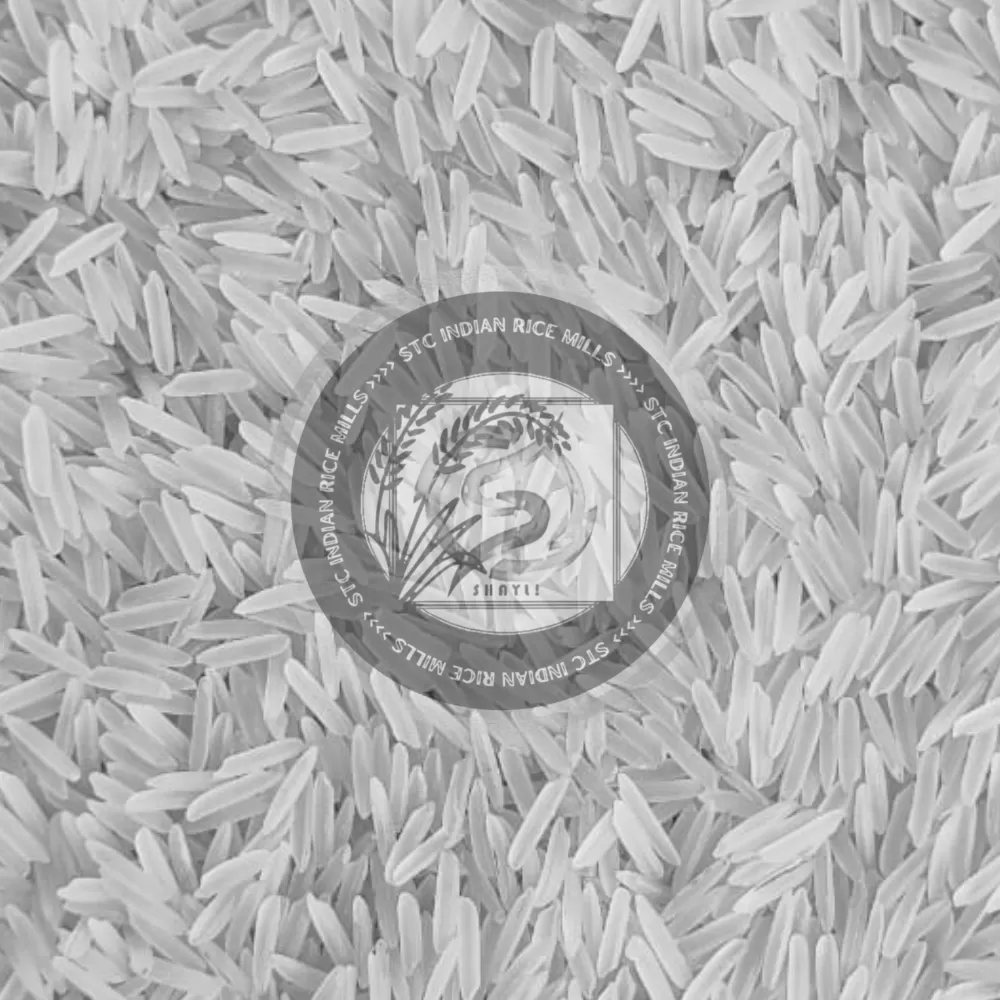
About Indian Pusa Basmati Rice :-
Milling Process :-
| Origin | India |
| Purity | 95.00% |
| Natural Admixture | 5.00% |
| Average Grain Length | 7.40MM |
| Moisture | 12.5% MAX. |
| Broken Grain | 1% MAX. |
| Damage/Discolour Grain | 1% MAX. |
| Immature Grain | 1% MAX. |
| Contrasting Varieties | 0.00% |
| Under-milled & Red-striped | 0.00% |
| Sortex Clean |
100% |
| Color |
White |
| Polishing Grade |
Double silky Polished |
| Milling Degree | Well Milled |
| Foreign Matter | Nil |
| Packaging Type | Jute, PP, WPP, BOPP, Jambo PP, LDPET, Non-woven Bags & Side Gussetz, 3D/2D Pouches or (1kg to 1000kgs Bags Packaging Available as per Buyer's choices). |
| Supply Ability | 2000 tons Per Week |
| Main Export Market(S) | Europe, USA, Australia, Saudi Arabia, Kuwait, Egypt, UAE, Jordan, Oman, Bahrain, Yemen, Syria, Iraq, Libya, Turkey |
| Delivery Time | 15 Days |
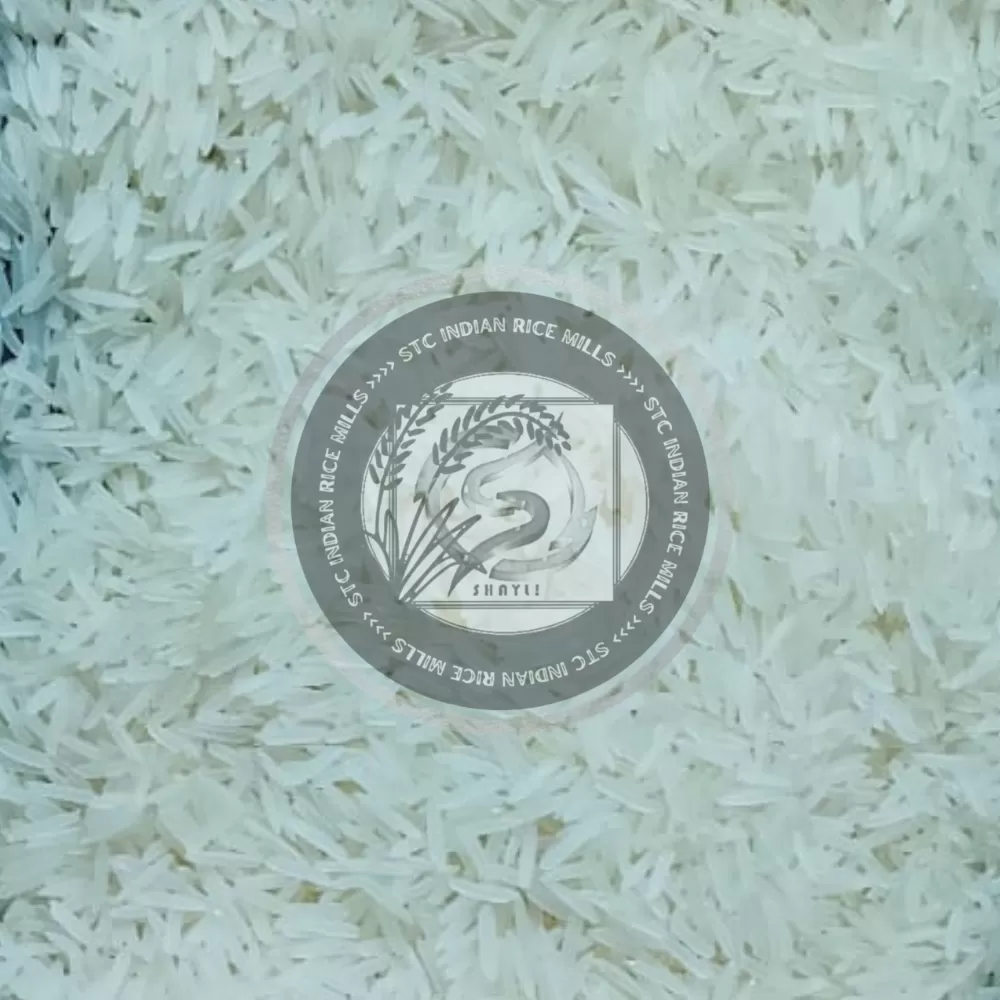
About Indian Pusa Basmati Rice :-
Milling & Parboiling Process :-
| Origin | India |
| Purity | 95.00% |
| Natural Admixture | 5.00% |
| Average Grain Length | 7.45MM |
| Moisture | 12.5% MAX. |
| Broken Grain | 1% MAX. |
| Damage/Discolour Grain | 1% MAX. |
| Immature Grain | 1% MAX. |
| Contrasting Varieties | 0.00% |
| Under-milled & Red-striped | 0.00% |
| Sortex Clean |
100% |
| Color |
White/Creamy |
| Polishing Grade |
Double silky Polished |
| Milling Degree | Well Milled |
| Foreign Matter | Nil |
| Packaging Type | Jute, PP, WPP, BOPP, Jambo PP, LDPET, Non-woven Bags & Side Gussetz, 3D/2D Pouches or (1kg to 1000kgs Bags Packaging Available as per Buyer's choices). |
| Supply Ability | 2000 tons Per Week |
| Main Export Market(S) | Europe, USA, Australia, Saudi Arabia, Kuwait, Egypt, UAE, Jordan, Oman, Bahrain, Yemen, Syria, Iraq, Libya, Turkey |
| Delivery Time | 15 Days |
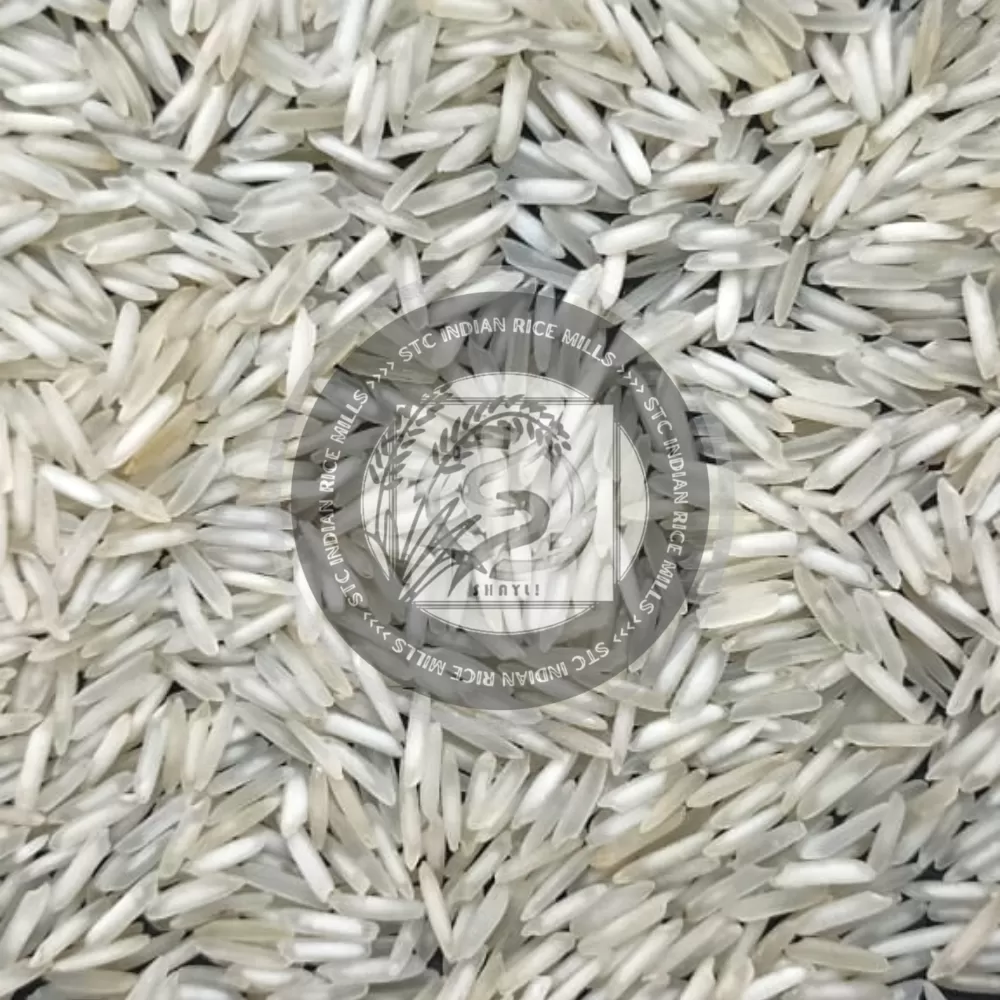
About Indian Pusa Basmati Rice :-
Milling & Steaming Process :-
| Origin | India |
| Purity | 95.00% |
| Natural Admixture | 5.00% |
| Average Grain Length | 7.45MM |
| Moisture | 12.5% MAX. |
| Broken Grain | 1% MAX. |
| Damage/Discolour Grain | 1% MAX. |
| Immature Grain | 1% MAX. |
| Contrasting Varieties | 0.00% |
| Under-milled & Red-striped | 0.00% |
| Sortex Clean |
100% |
| Color |
Yellow white |
| Polishing Grade |
Double silky Polished |
| Milling Degree | Well Milled |
| Foreign Matter | Nil |
| Packaging Type | Jute, PP, WPP, BOPP, Jambo PP, LDPET, Non-woven Bags & Side Gussetz, 3D/2D Pouches or (1kg to 1000kgs Bags Packaging Available as per Buyer's choices). |
| Supply Ability | 2000 tons Per Week |
| Main Export Market(S) | Europe, USA, Australia, Saudi Arabia, Kuwait, Egypt, UAE, Jordan, Oman, Bahrain, Yemen, Syria, Iraq, Libya, Turkey |
| Delivery Time | 15 Days |
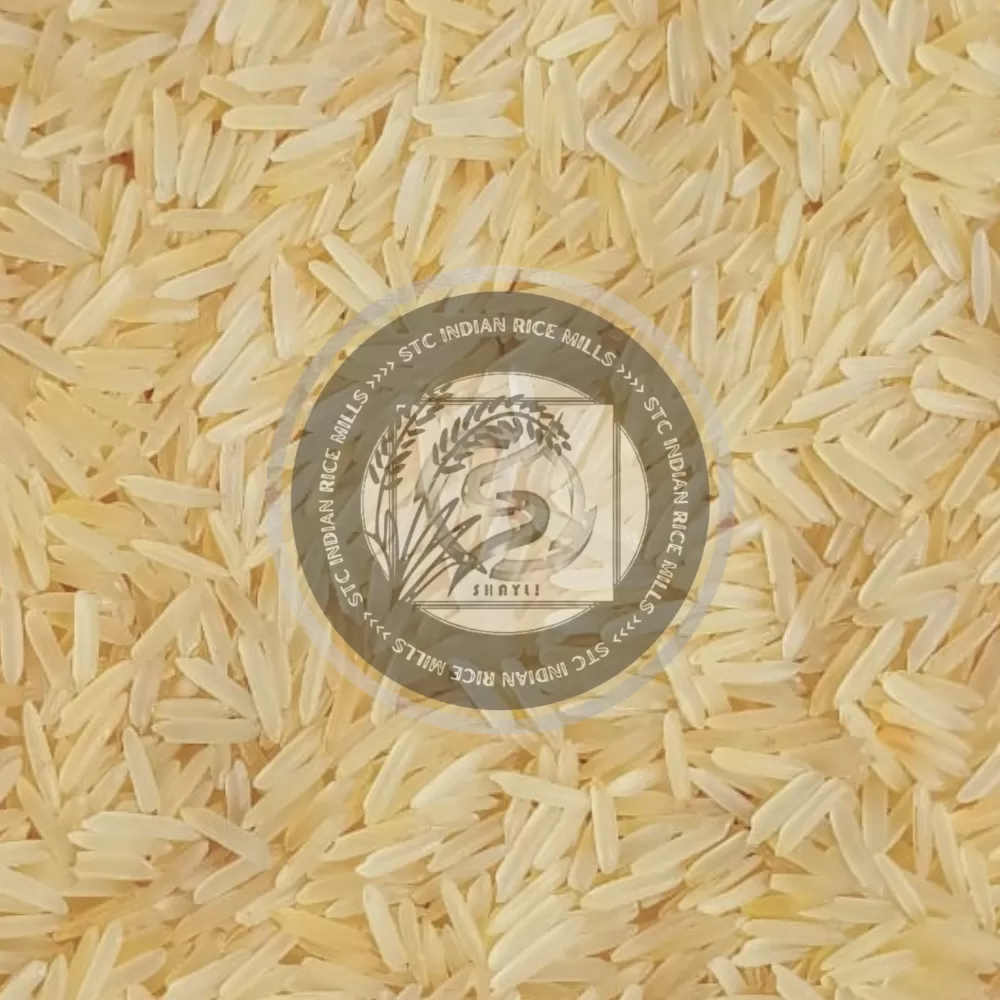
About Indian Pusa Basmati Rice :-
Milling & Golden Parboiling Process :-
| Origin | India |
| Purity | 95.00% |
| Natural Admixture | 5.00% |
| Average Grain Length | 7.45MM |
| Moisture | 12.5% MAX. |
| Broken Grain | 1% MAX. |
| Damage/Discolour Grain | 1% MAX. |
| Immature Grain | 1% MAX. |
| Contrasting Varieties | 0.00% |
| Under-milled & Red-striped | 0.00% |
| Sortex Clean |
100% |
| Color |
Golden |
| Polishing Grade |
Double silky Polished |
| Milling Degree | Well Milled |
| Foreign Matter | Nil |
| Packaging Type | Jute, PP, WPP, BOPP, Jambo PP, LDPET, Non-woven Bags & Side Gussetz, 3D/2D Pouches or (1kg to 1000kgs Bags Packaging Available as per Buyer's choices). |
| Supply Ability | 2000 tons Per Week |
| Main Export Market(S) | Europe, USA, Australia, Saudi Arabia, Kuwait, Egypt, UAE, Jordan, Oman, Bahrain, Yemen, Syria, Iraq, Libya, Turkey |
| Delivery Time | 15 Days |
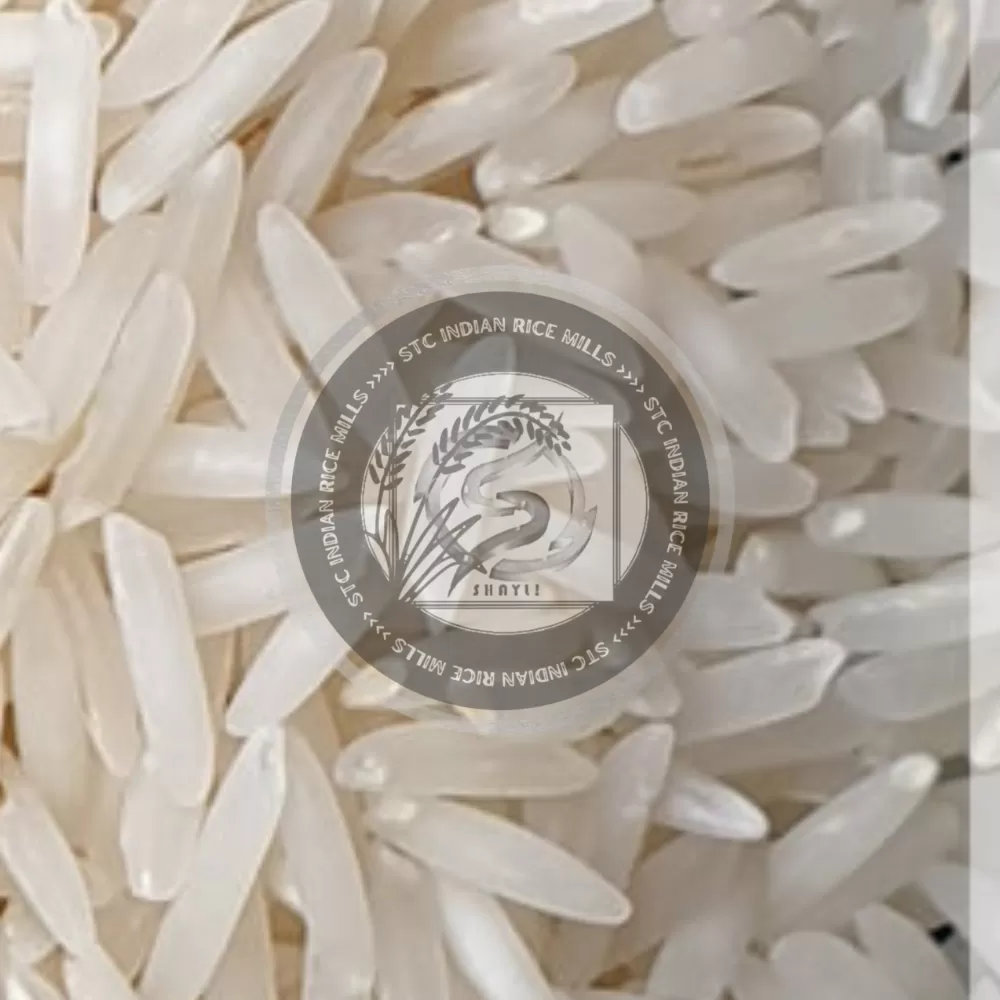
About Indian Traditional Basmati Rice :-
Milling & Grading Process :-
| Origin | India |
| Purity | 95.00% |
| Natural Admixture | 5.00% |
| Average Grain Length | 7.25MM |
| Moisture | 12.5% MAX. |
| Broken Grain | 1% MAX. |
| Damage/Discolour Grain | 1% MAX. |
| Immature Grain | 1% MAX. |
| Contrasting Varieties | 0.00% |
| Under-milled & Red-striped | 0.00% |
| Sortex Clean |
100% |
| Color |
White |
| Polishing Grade |
Double silky Polished |
| Milling Degree | Well Milled |
| Foreign Matter | Nil |
| Packaging Type | Jute, PP, WPP, BOPP, Jambo PP, LDPET, Non-woven Bags & Side Gussetz, 3D/2D Pouches or (1kg to 1000kgs Bags Packaging Available as per Buyer's choices). |
| Supply Ability | 2000 tons Per Week |
| Main Export Market(S) | Europe, USA, Australia, Saudi Arabia, Kuwait, Egypt, UAE, Jordan, Oman, Bahrain, Yemen, Syria, Iraq, Libya, Turkey |
| Delivery Time | 15 Days |
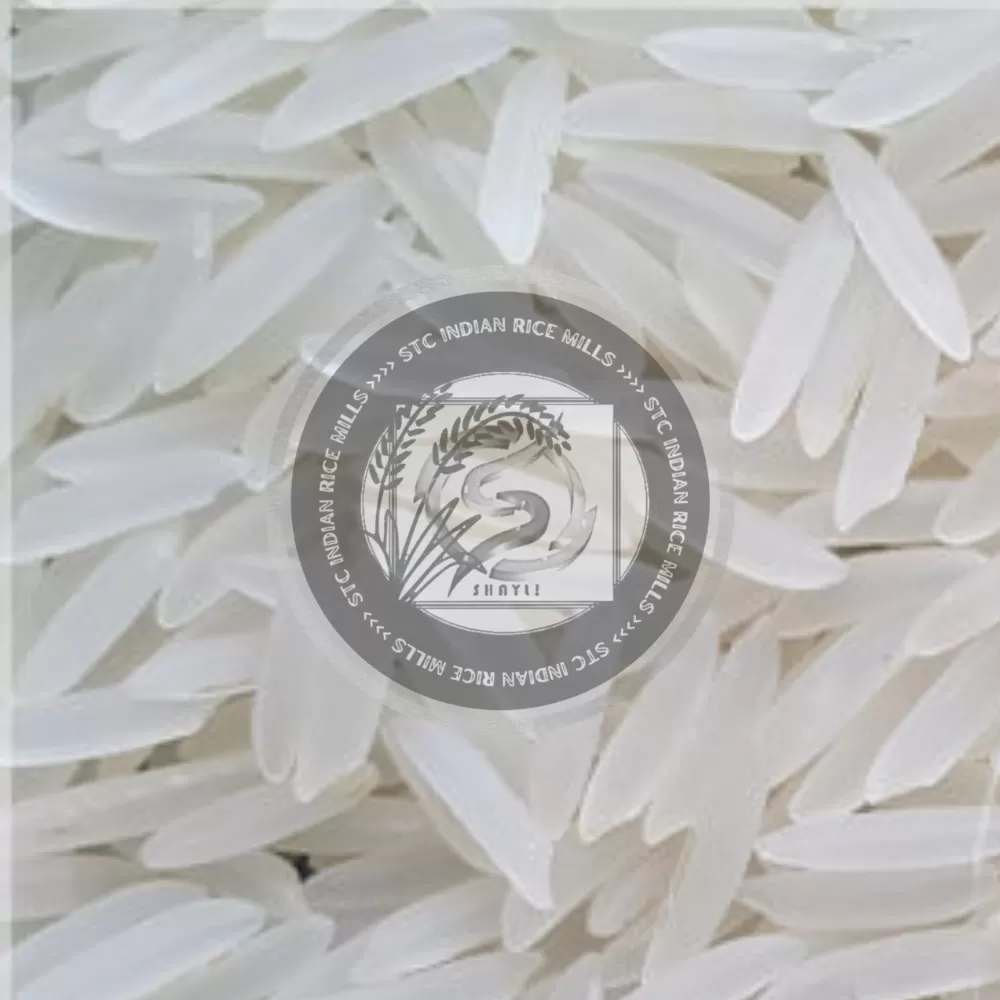
About Indian Traditional Basmati Rice :-
Milling & Parboiling Process :-
| Origin | India |
| Purity | 95.00% |
| Natural Admixture | 5.00% |
| Average Grain Length | 7.25MM |
| Moisture | 12.5% MAX. |
| Broken Grain | 1% MAX. |
| Damage/Discolour Grain | 1% MAX. |
| Immature Grain | 1% MAX. |
| Contrasting Varieties | 0.00% |
| Under-milled & Red-striped | 0.00% |
| Sortex Clean |
100% |
| Color |
White/Creamy |
| Polishing Grade |
Double silky Polished |
| Milling Degree | Well Milled |
| Foreign Matter | Nil |
| Packaging Type | Jute, PP, WPP, BOPP, Jambo PP, LDPET, Non-woven Bags & Side Gussetz, 3D/2D Pouches or (1kg to 1000kgs Bags Packaging Available as per Buyer's choices). |
| Supply Ability | 2000 tons Per Week |
| Main Export Market(S) | Europe, USA, Australia, Saudi Arabia, Kuwait, Egypt, UAE, Jordan, Oman, Bahrain, Yemen, Syria, Iraq, Libya, Turkey |
| Delivery Time | 15 Days |